Download the complete 23pp 1970 Turner Microphones Catalog (in two parts due to size):
DOWNLOAD PART ONE: Turner_1970_catalog1
DOWNLOAD PART TWO: Turner_1970_catalog2
Models covered, with text, specs, and photos, include: Turner 500, S-500, 505, FM500, and 777 microphones; Turner 600, 600, 701, 2203, 35, 35A, 2300, Balladier 866, 766, 566, and 2266 mics; Turner Model 360, J-360, 350C, 355C, SR90D-5, SR90D-6, SR90R, M+2/U, JM+2/U, +350, and J+350 push-to-talk communications mics; Turner 254X, 254C, 454X, 454C, 754C, Model +3, Model +2, model 750, 751, 758, 250, 251, 252, 253, 258, and +50 ‘base station’ tabletop mics; Turner model 2800, 2804, 2811, 2812, 2813, 2814, S2850, 2852, 304C, 300C, 304X, and 30002 ‘tape recorder’ (IE, economy) microphones; Turner SR585D, 585m SR70D, 58, 58A, S58, 33D, S33D, P-9D, 35614, and 36004 ‘general purpose’ mics; and a range of accessories including the Turner RA-50 ‘remote amplifier.’
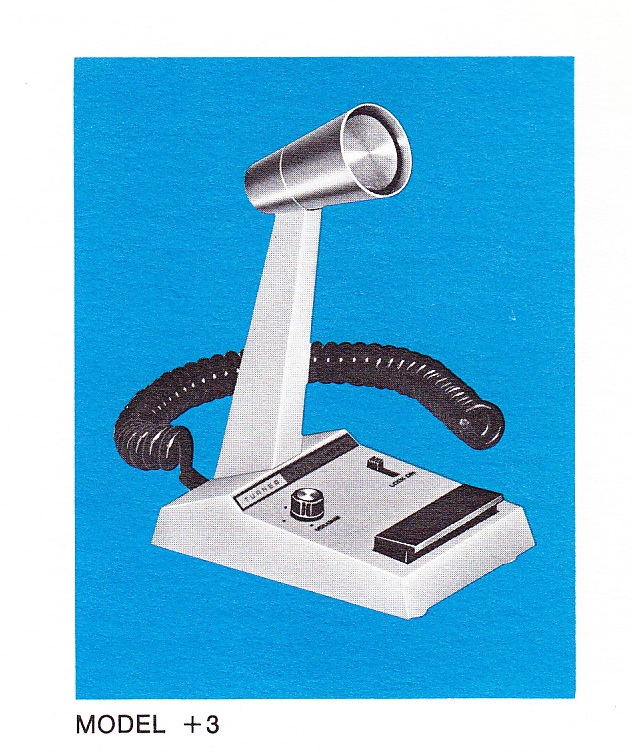 Above, the Turner +3 ‘base station’ mic. The “plus-three” designation, in Turner-speak, indicates a battery-powered, self-amplified microphone that also has a built-in compression circuit. Although the +3 is the only mic in the 1970 catalog that has this feature, it would become available on some of their smaller hand-held communications mics in a couple of years. I recently purchased a new-in-the-box M+3/U that I am excited to try out; the only problem is that it uses some sort of since-banned mercury-cell battery. So I need to implement a work-around there. Could make an interesting ‘secret weapon’ ‘set-to-incinerate’ room mic. Sorta like an ancient mic-plus-level-loc all-in-one.
Above, the Turner +3 ‘base station’ mic. The “plus-three” designation, in Turner-speak, indicates a battery-powered, self-amplified microphone that also has a built-in compression circuit. Although the +3 is the only mic in the 1970 catalog that has this feature, it would become available on some of their smaller hand-held communications mics in a couple of years. I recently purchased a new-in-the-box M+3/U that I am excited to try out; the only problem is that it uses some sort of since-banned mercury-cell battery. So I need to implement a work-around there. Could make an interesting ‘secret weapon’ ‘set-to-incinerate’ room mic. Sorta like an ancient mic-plus-level-loc all-in-one.
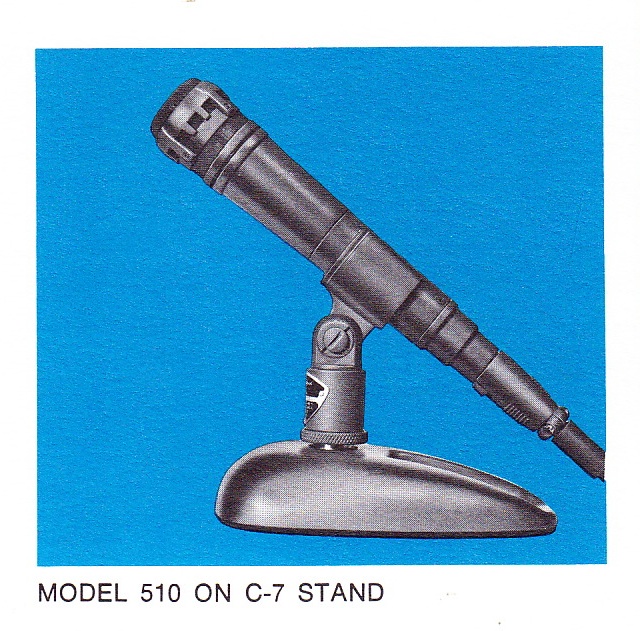 Above, the Turner 510, one of our favorite snare drum mics at Gold Coast Recorders. The 510 was, AFAIK, the most high-fidelity mic that Turner ever made.
Above, the Turner 510, one of our favorite snare drum mics at Gold Coast Recorders. The 510 was, AFAIK, the most high-fidelity mic that Turner ever made.
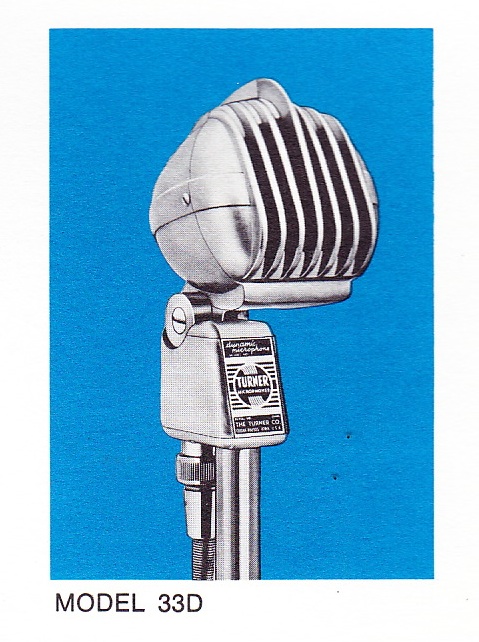 Above, the classic Turner 33D, perhaps the most visually-iconic of their lineup. How long was thing thing in production? At least forty years. Seems like an impossibly long time, until you consider how long Shure has been making 545s, and how long Sennheiser has been making 421s… both of those designs are past the 45-year-old mark at this point…
Above, the classic Turner 33D, perhaps the most visually-iconic of their lineup. How long was thing thing in production? At least forty years. Seems like an impossibly long time, until you consider how long Shure has been making 545s, and how long Sennheiser has been making 421s… both of those designs are past the 45-year-old mark at this point…
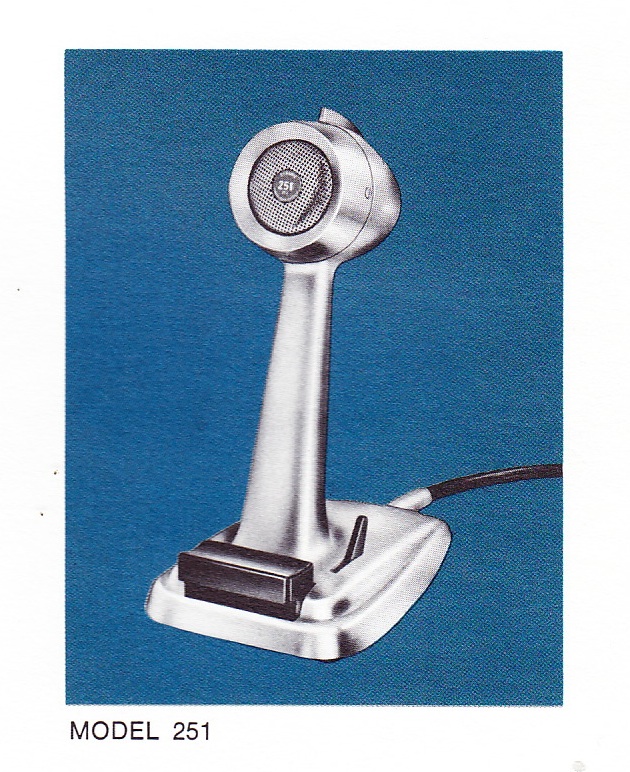 …and the Turner 251. The 250 series was also very long-running at Turner; 251s can have a really cool sound for that ‘rock’ vocal thing; instant ‘bad-p.a.’ punk sound, but quiet and reliable. I seem to find one or two of these per year; there are a ton out there for very little bread…
…and the Turner 251. The 250 series was also very long-running at Turner; 251s can have a really cool sound for that ‘rock’ vocal thing; instant ‘bad-p.a.’ punk sound, but quiet and reliable. I seem to find one or two of these per year; there are a ton out there for very little bread…
See here for previous Turner Microphone coverage and catalogs at ps dot com.
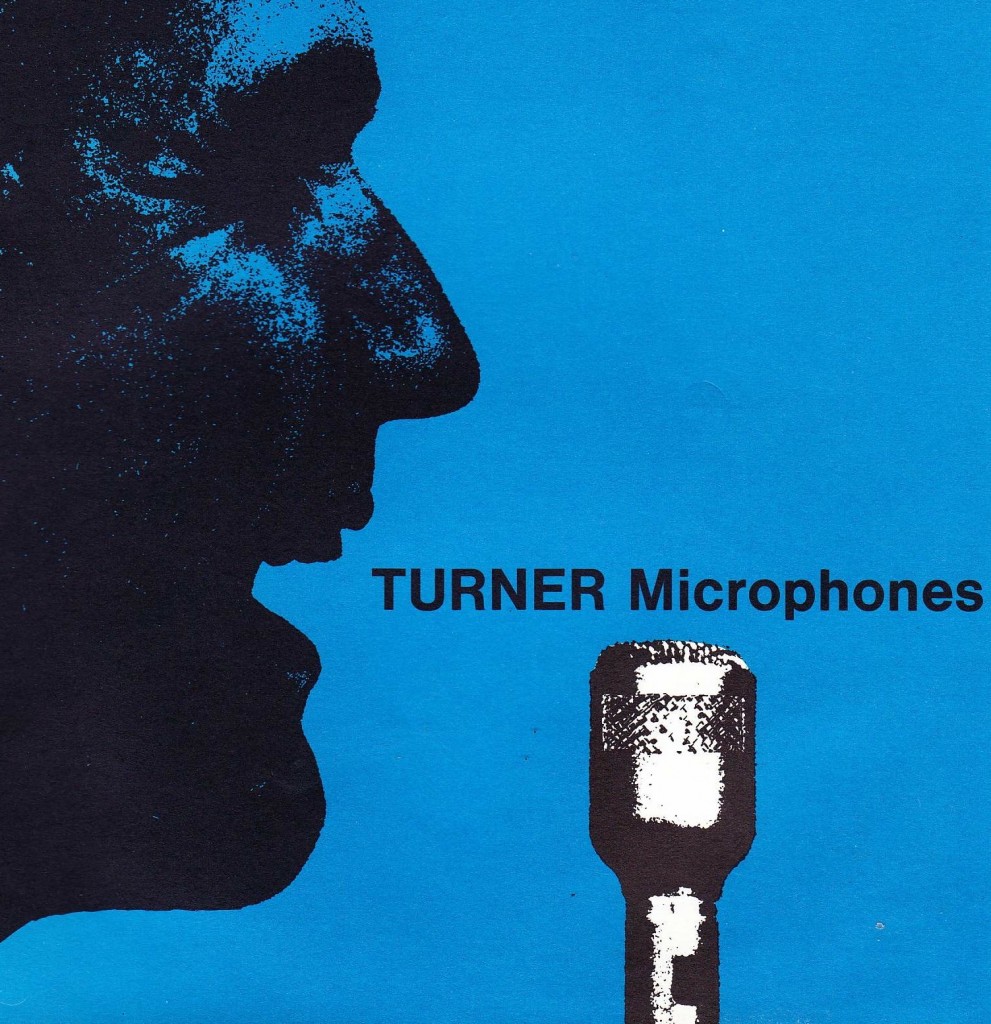
9 replies on “Turner Microphones circa 1970”
Turner has left the mic business to concentrate on their primary product line: embalming machines.
The original reason they got in the mic business was that funeral directors found existing mics insufficient for use in the funeral parlor. Maybe the formaldehyde fumes attacked the capsules or something.
No, funeral homes were just an early adopter market for small PA systems, and also many of them already had an amplifier and speaker in the form of a Hammond organ. Usually they did NOT have a Leslie, rather they used the Hammond speaker and amp.
Later on most of them went the other way, putting in an installed system and running organ and service audio through both. An inordinate number of them bought Mcintosh power amps and for years the audio sharks would go to all the funeral parlors in search of old Macs to ship them to the Far East.
The common denominator probably is that funeral homes tend to buy everything from a single source and those included Turner then, and later the funeral house distributors picked McIntosh. Macs were low maintenance, reliable, and combined high fidelity with 600 ohm or 70 volt outputs for distribution systems, and I have been told, but can’t confirm, they sold to the funeral business distributors at quite a low price as long as they sold only to the funeral industry.
Turner is now out of business but its classic Portiboy, manufactured by successors, remains the small block Chevy or M1911 of the embalming machine business.
Sirs: I am actively in the cb radio thing, in my opinion, the turner +3 is the best mic ever made. My question is where might I find parts and original replacement decals and emblems, as I restore everyone I can find. Any help would be greatly appreciated. Thank you very much! Earl
I would be interested in the turner plus 3b decals –did you have any luck in locating them ,please.
Thanks ,I hope you were lucky –I’m restoring mine with the crinkle finish black paint –would love the decals -even if anybody has a junked one ..would buy it.
Thanks
Bruce
brucedownunder at virginbroadband.com.au
i got a turner m+3b i need a battery for it whats size do i need to get it working it a four pin hand held
i have a tuner m+3b i need a battery for it what size do i need can you still buy them thank u
Hello Turner fans,
I use 5 button cell LR-44 in series, and shrink them together with
tube shrink. It fits nicely into the battery holder on the back of the M+3 or JM+3, or the RK60, RK66, and RK76
LR-44 are very cheap on ebay
73`s
Rene, PA7R
I had never heard about the funeral home business story before, but I do know that when Turner was in Cedar Rapids, IA they went out of business when a company by the name of TELEX bought them and discontinued the whole business. I have a vintage Turner 500 model, and as far as high impedance microphones go, it’s the best I’ve ever seen.